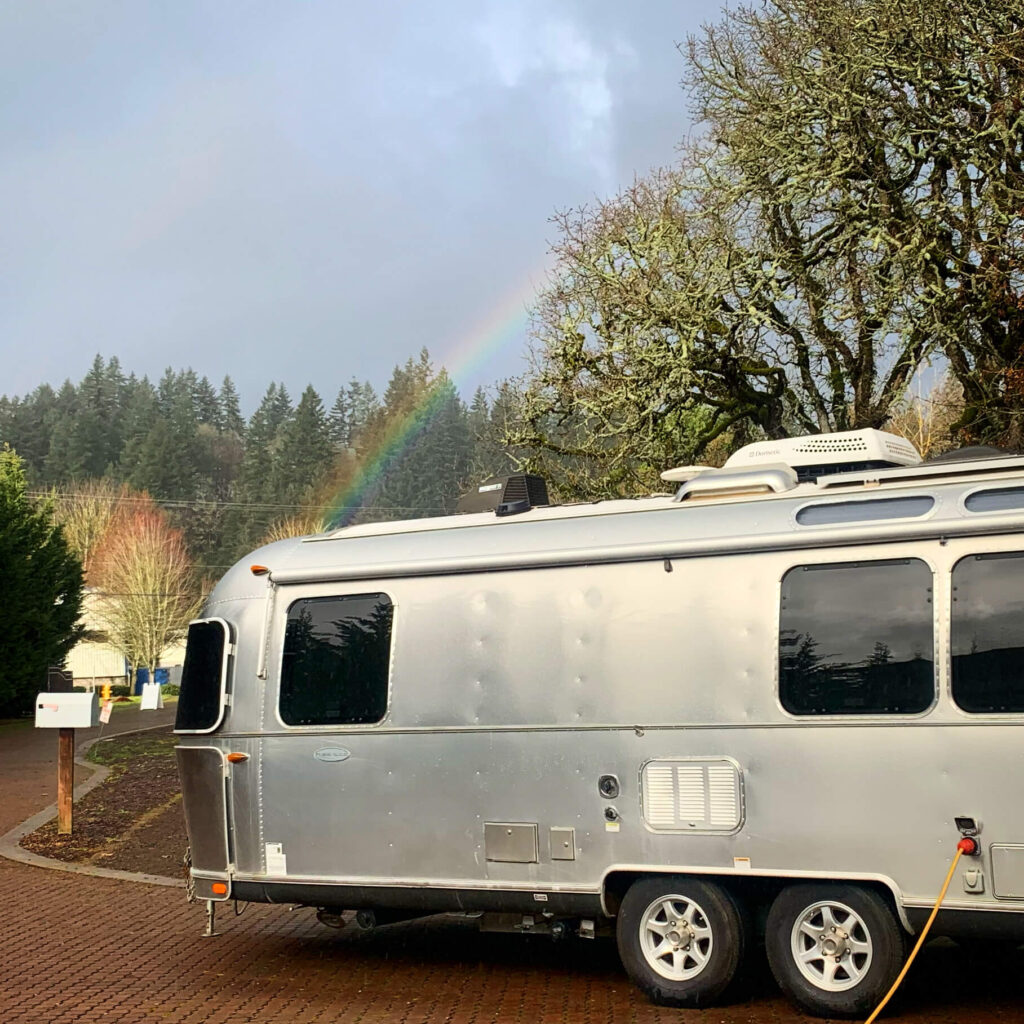You know when you try to find a recipe online and you have to scroll through many paragraphs of AI-generated fluff just to get to the ingredient list… I don’t want to put you through that. LiFeBlue and Victron are the way to go. If you want more details on why, you can read the rest of this blog, not generated by AI, but by a decade of RV power system experience.
When I check the stock prices of popular lithium battery manufacturers, I can’t help but feel relieved that I’m not a shareholder in any of them. The competition has become intense, and most consumers end up evaluating options solely based on price and how effectively the company’s marketing has resonated with them. This environment has triggered a race to the bottom, where uninformed, penny-pinching battery buyers often end up with subpar products that don’t work as advertised—or, in extreme cases, transform their prized possessions into unexpected bonfires. Hopefully, this article saves a few of them.

Full Disclosure: We are staunch supporters of LiFeBlue and Victron. Those are the only names of companies I’m going to mention in this blog. I’m not saying there aren’t other good batteries, but those are two brands we prefer to work with. The fiery disaster pictured above wasn’t caused by LiFeBlue or Victron, but after a thorough inspection, I’m willing to bet that another popular brand of very-cheap batteries turned this new 5th Wheel into a heap of molten metal. These bargain batteries tarnish the industry, and that sparks our frustration.
At AM Solar, we have a unique business model where we provide free tech support for life to our clients. We can’t afford to have subpar products frustrating our customers, tying down our Tech Support Team, or suing us for ruined RVs. We test what we sell, and we sell the best. Our systems aren’t designed to be the cheapest; they’re designed to work reliably. That’s how we’ve managed to stay in business since 2002.
Know What the Specifications Mean
Dimensions – This is pretty obvious. The battery isn’t going to be very useful if it doesn’t fit. When evaluating dimensions, you will need to consider that many lithium batteries need to be installed with the terminals facing up. If you have to turn the battery on its side, make sure the battery has cells that allow for this.
Weight – Lithium batteries are much lighter than lead-acid alternatives, but their weight is still considerable. Before you add a lithium battery bank to an RV, especially to a trailer, put a comparable amount of weight where you plan to mount the batteries. Drive around with that weight, and make sure the rig handles in a way that you can manage comfortably.
Amp-hour Capacity – This is a good measure of how much energy you can store and use in the battery. But, keep in mind, not all batteries measure this the same way. Several years ago we were torture testing a Victron 90Ah battery. We were able to pull 110Ah out of it. On the other end of the spectrum, some batteries are less conservative in their ratings and list a higher number, but in fine print recommend only pulling 80% of the rated capacity.
Warranty – Marketing departments craft clever warranties, but if that company isn’t going to be around when the battery experiences a problem, then the warranty is totally useless. I don’t put much faith in warranties. Instead, I recommend dealing with domestic companies that care about their reputation and reviews. If a company is truly interested in customer satisfaction, words on a warranty document shouldn’t even come into play.
Discharge Current Limitations – This important, and often overlooked specification is critical when trying to find the minimum battery bank needed to power a particular load. For example, if you have a 3000VA inverter, you will need about 300A of battery output current to fully support it. If your lithium battery can only handle 100A of steady state discharge, you’ll need three of those batteries to support the inverter system. Likewise, if your battery can handle 150A of steady state discharge, you can get away with just two batteries. Quality batteries will list a surge current limit and a duration for the surge. This is great, especially when turning on heavy loads like air conditioners.
Charging Current Limitations – Some inverter/chargers are capable of feeding 120A to a battery bank, and some alternator chargers can send 280A to the battery bank. It is important that you design a battery bank that can handle the charging current it will be exposed to. If you have one of the 280A alternator chargers, and your favorite battery can only handle about 60A of charge current, you better make sure you have at least five of those batteries in your system.
Temperature Limitations – LiFePO4 doesn’t like to take a charge below freezing (0℃). There is some wiggle room around this, as a small current can be applied a few degrees below freezing, but it’s easiest to have all charging current shut off when the batteries get near freezing. Quality lithium batteries have a feature built-in that prevents cold charging. Many batteries have a storage temperature minimum. This limit has more to do with the plastic housing becoming brittle, than it does with damage to the actual cells. Most lithium batteries have a maximum temperature of around 120℉. This really just means you shouldn’t install the battery in the engine compartment.
Lifespan Cycles – Some battery manufacturers advertise that their batteries can perform a certain number of cycles, like 5000, in a lifespan. The problem with this is that cycles are defined differently by different manufacturers. Is a cycle 100% to 0%, or 80% to 20? It’s hard to get a straight answer. Also, I wonder how this is tested. If you test a battery with one cycle per day, it would take over thirteen years to reach 5000 cycles. If you did two cycles per day it would take about seven years. I doubt any lithium battery manufacturers fully carried out this test before marketing their products.
Special Features
Heated / Low Temp Batteries – LiFePO4 doesn’t like to be charged when frozen. Good batteries disconnect the cells when a certain low temperature is reached. Better batteries have built-in heaters that bring the cells up to a temperature that will allow them to take a charge. Some batteries have manually activated heating systems that draw power from the batteries. The best batteries have automatic systems that use redirected charging current, so the charge is never diminished.
Environment Rating and Location – If a battery is mounted in an exterior box, or otherwise exposed to the elements, dust and moisture will shorten the lifespan of the battery. If you have to install your lithium batteries in a location like this, make sure they are sealed batteries, like the IP67 LiFeBlue Ultimus batteries.
Bluetooth monitoring – About five years ago I talked with a battery manufacturer that refused to put Bluetooth monitors in the batteries because they felt Bluetooth would be obsolete before their batteries. It was a bold claim. Here we are now, and Bluetooth is still a very convenient way to monitor battery status, and that manufacturer is getting edged out by better batteries with more features. If you don’t have Bluetooth, you have a mystery box, which makes it hard to tell if the battery is functioning properly, especially when installed in a large bank with many batteries.
Made in America – Made in the US generally means that the company is more bankable (or at least exists in an environment where their government will hold them accountable) and may possess better QC and institutional knowledge. But, we are living in a global economy and I don’t believe there are any lithium batteries that are truly made in America, with all their raw materials sourced in America. Some manufacturing may take place in America, but not 100%. That being said, I do know some funny stories about companies that claimed this in their marketing. One company got some serious fines. The other company heard about the fines and removed all “Made in America” language from their website. They even reached out to their brand ambassadors and made them remove all “Made in America” references from their YouTube videos. It would be great if there was an all American battery, but to my knowledge, there isn’t one.
Significance of the Specifications
Not all batteries perform as advertised. Just because a battery has advertised specifications, doesn’t mean the battery actually meets those specifications. A lot of the specifications are very difficult to verify without expensive equipment and time. Then, once you’ve verified them, in many cases the battery is spent, possibly no longer useful, and your return window has expired. Then, you have to deal with a phone call to China, which probably isn’t going to go anywhere. On top of that, shipping lithium batteries is very complicated and expensive. As a typical consumer, you can’t just take a battery to the UPS store and expect them to ship it. Fortunately, there are many YouTube engineers out there who may have disassembled the battery that you are considering purchasing on a video, and that could be a useful data point in your purchasing decision.
Beyond the Specifications
The raw materials from one battery to the next are pretty much parity. It’s not like there is nicer Lithium or nicer Iron in one battery or the other. What really matters is the quality of BMS, the quality of “fit and finish”, and the bankability of the company.
One of the jobs of a Battery Management System (BMS) is to protect the battery cells from excessive current. A cheap BMS will just disconnect the cells when a certain current threshold is reached. A good BMS takes into account the duration of the high current, and does it in a way that perfectly balances surge performance, cell longevity, and safety. It’s very unlikely that the details of how a BMS operates are going to be advertised on a spec sheet, and if they were, it would be unintelligible to most people. Victron and LiFeBlue batteries have the best BMS that we have seen.
Ask yourself, do you want an insurance claim, a science project, or a reliable power system?




